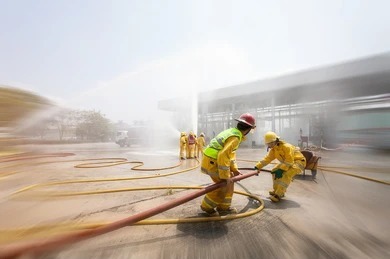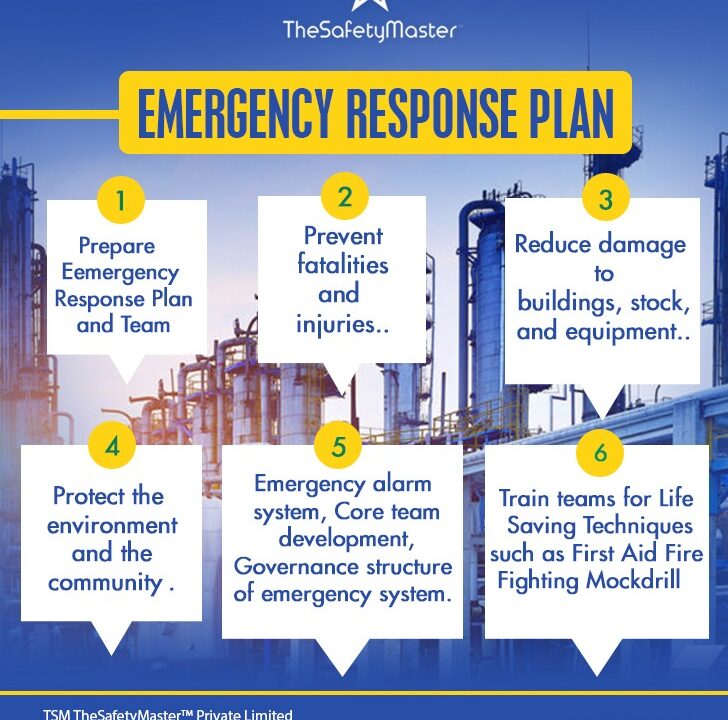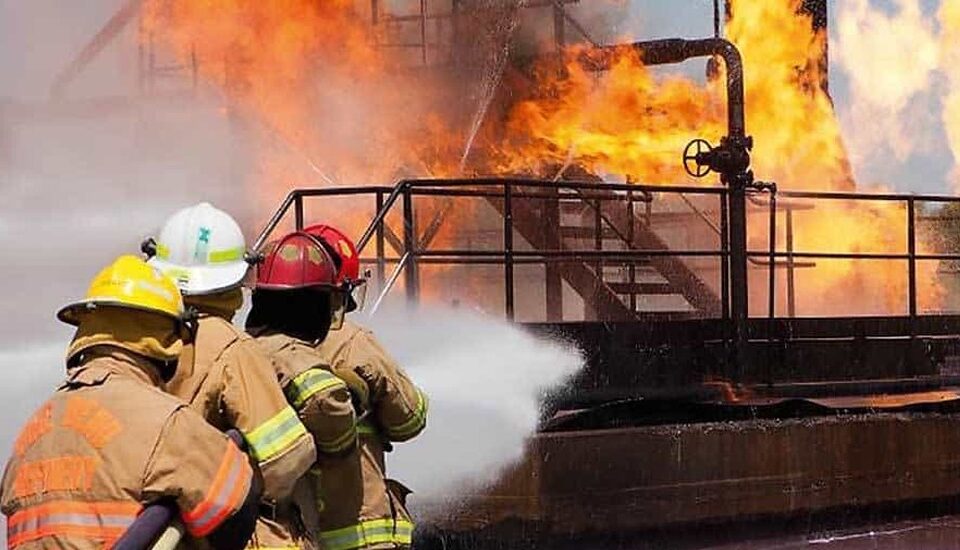How to Develop an Effective Emergency Response Plan for Your Business

Safety Consultant vs. Safety Specialist: What’s the Difference?
June 10, 2023
Best Practices for Ensuring Comprehensive Health and Safety Assessments for Project Sites
June 12, 2023How to Develop an Effective Emergency Response Plan for Your Business
In this article, we will discuss the importance of having an effective emergency response plan in place for your business. Disasters can strike at any time, and being prepared can mean the difference between swift recovery or bankruptcy. We will guide you through the key steps to developing a comprehensive plan that takes into account potential risks and sets out clear procedures for employees. By the end of this article, you will have a solid foundation to create an emergency response plan that keeps your business running smoothly, even in the face of adversity.
Introduction
As a business owner, your top priority is the safety of employees, customers, and assets. Unfortunately, emergencies can occur at any time without warning. Natural disasters, fires, or acts of violence are some of the events that may threaten your businesses’ safety. To protect your business and ensure the well-being of all involved parties, it’s essential to have an effective emergency response plan.In this article, we’ll explore how to develop an effective emergency response plan for your business. We’ll discuss why such a plan is necessary and what you can expect during the development process. We’ll also provide practical tips on communication protocols, emergency response procedures, continuity planning and recovery strategies
Importance of Emergency Response Plan for Businesses
Effective emergency response planning is essential for safeguarding businesses from potential disasters. The importance of emergency response plans cannot be overstated, particularly in today’s world where natural calamities, cyber-attacks, and man-made disasters are becoming more frequent.Having a comprehensive plan in place allows businesses to react quickly and efficiently during emergencies. An effective emergency response plan not only helps to save lives but also minimizes damage to property, reduces downtime and ensures that critical business operations continue uninterrupted.
Creating an emergency response plan can seem daunting, but it is a necessary risk-management strategy. Ultimately, businesses that invest time and effort into developing a thorough emergency response plan are better able to protect their assets and employees while maintaining operational continuity in times of crisis.
Developing Communication Protocols
In times of emergency, clear communication can make all the difference in ensuring the safety and security of your employees and customers. Developing communication protocols as part of your business’s emergency response plan is critical to a swift and effective response.Start by designating an emergency communications coordinator who will be responsible for disseminating information to all relevant parties. This individual should have access to multiple modes of communication, including email, phone, text messaging, and social media.
Next, establish a chain of command and clear lines of communication between key personnel. This should include identifying who will be responsible for communicating with first responders, coordinating with neighboring businesses or organizations if necessary, and keeping employees informed about the situation. By taking these steps to develop effective communication protocols in advance, you can help ensure that everyone knows what to do in case of an emergency.
Establishing Emergency Response Procedures
Establishing Emergency Response Procedures:Once your communication protocols are established, the next step is to develop emergency response procedures that take into account a range of emergency scenarios. These procedures will serve as a guide for your employees on how to act during an emergency. For example, if there is a fire, what are the steps that employees should take? Who should they contact? Where should they assemble?
Emergency response procedures also need to be regularly reviewed and updated to ensure that they remain relevant and effective. You may need to conduct regular drills or simulations with your employees so that everyone knows what their role is in case of an emergency. As part of this process, you can identify any potential gaps in your plan and take steps to address them before an actual emergency occurs.
By establishing clear and thorough emergency response procedures, you can minimize the impact of any potential emergencies on your business operations and ensure the safety of your employees. By taking proactive measures, you can build confidence among your workforce that you have their best interests at heart and are prepared for any eventuality.
Establishing Continuity and Recovery Plan
Establishing Continuity and Recovery Plan:In the event of a disaster, it is essential to have a plan in place that ensures business continuity and quick recovery. This plan should outline critical functions that are necessary to keep the business running during an emergency. It should also include steps on how to resume normal operations once the crisis has passed.
One way to establish continuity is by identifying key personnel who will be responsible for executing the plan. They should have clear instructions on their roles and responsibilities during an emergency. Additionally, it is vital to identify alternative facilities, equipment, and supplies that can be used in case of damage or destruction of primary resources.
Having a recovery plan helps businesses get back on their feet faster after a disaster. This plan should include steps on how to assess damage and losses, prioritize recovery activities, and coordinate with insurance providers. It should also outline communication procedures with stakeholders such as customers, vendors, and employees regarding resuming normal operations.
Developing a comprehensive continuity and recovery plan can provide peace of mind for business owners. Knowing that their company can continue functioning during an emergency as well as quickly recover afterward gives them confidence in their ability to weather any storm.
Conclusion
As a business owner, you have the responsibility of ensuring the safety and wellbeing of your employees during emergencies. Developing an effective emergency response plan is crucial to achieving this goal. By following the steps outlined in this article, you can develop a comprehensive plan that will help you prepare for and respond to various types of emergencies. Remember, being proactive in your approach is always better than being reactive. Don’t wait until an emergency occurs to start planning; start today so that you can be confident in your ability to protect your employees and business.
At TSM TheSafetyMaster Private Limited we offer following services
TSM TheSafetyMaster® Private Limited
DUST EXPLOSION HAZARD ASSESSMENT
ELECTROSTATIC HAZARD ASSESSMENT
Unit No 221-451-452, SPL1/J, 2nd & 4th Floor, Sunsquare Plaza Complex, RIICO Chowk, Bhiwadi 301019, Rajasthan, India
Phone: +91 1493 22 0093
Mobile: +91 7665231743/9413882016
Email: info@thesafetymaster.com



